A nice paper by Valgerður Hjaltalín and colleagues was accepted to Autophagy Reports. She worked on this during covid, with some help from us and others. Then added a nice experimental data to the manuscript during revisions. More on this as it emerges on the journal website.
A novel region within a conserved domain in ATG7 emerged in vertebrates.
Valgerdur J. Hjaltalin, Vivian Pogenberg, Kévin J. A. Ostacolo, Arnar Pálsson, Margrét Helga Ogmundsdottir
DNA methylation differences during development distinguish sympatric morphs of Arctic charr (Salvelinus alpinus)
Accepted in Molecular Ecology, first published: 18 July 2022
Changes in DNA methylation in specific coding or non-coding regions can influence development and potentially divergence in traits within species and groups. While the impact of epigenetic variation on developmental pathways associated with evolutionary divergence is the focus of intense investigation, few studies have looked at recently diverged systems. Phenotypic diversity between closely related populations of Arctic charr (Salvelinus alpinus), which diverged within the last 10 000 years, offers an interesting ecological model to address such effects. Using bisulfite sequencing, we studied general DNA methylation patterns during development in the four sympatric morphs of Arctic charr from Lake Thingvallavatn. The data revealed strong differences between developmental timepoints and between morphs (mainly along the benthic – limnetic axis), both at single CpG sites and in 1,000bp-regions. Genes located close to differentially methylated CpG sites were involved in nucleosome assembly, regulation of osteoclast differentiation, and cell-matrix adhesion. Differentially methylated regions were enriched in tRNA and rRNA sequences, and half of them were located close to transcription start sites. The expression of 14 genes showing methylation differences over time or between morphs was further investigated by qPCR and nine of these were found to be differentially expressed between morphs. Four genes (ARHGEF37-like, H3-like, MPP3 and MEGF9) showed a correlation between methylation and expression. Lastly, histone gene clusters displayed interesting methylation differences between timepoints and morphs, as well as intragenic methylation variation. The results presented here provide a motivation for further studies on the contribution of epigenetic traits, such as DNA methylation, to phenotypic diversity and developmental mechanisms.
European fire ants found in Iceland. / Evrópskir eldmaurar (Myrmica rubra) á Íslandi. Marco Mancini, Andreas Guðmundsson og Arnar Pálsson. Accepted by the Icelandic naturalist (Náttúrufræðingurinn).
Phylogenetic analyses revealed emergence in vertebrates of a novel region within a conserved domain in ATG7. Valgerdur J. Hjaltalin, Vivian Pogenberg, Arnar Pálsson, Margrét Helga Ogmundsdottir. (being revised).
DNA methylation differences during development distinguish sympatric morphs of Arctic charr (Salvelinus alpinus). Sebastien Matlosz, Benjamin Sigurgeirsson, Sigrídur Rut Franzdóttir, Arnar Pálsson, Zophonías O. Jónsson. (not on bioRxiv, second revision sent in).
Sebastien sent the revised manuscript again. Must say I am very excited about this study and its implications.
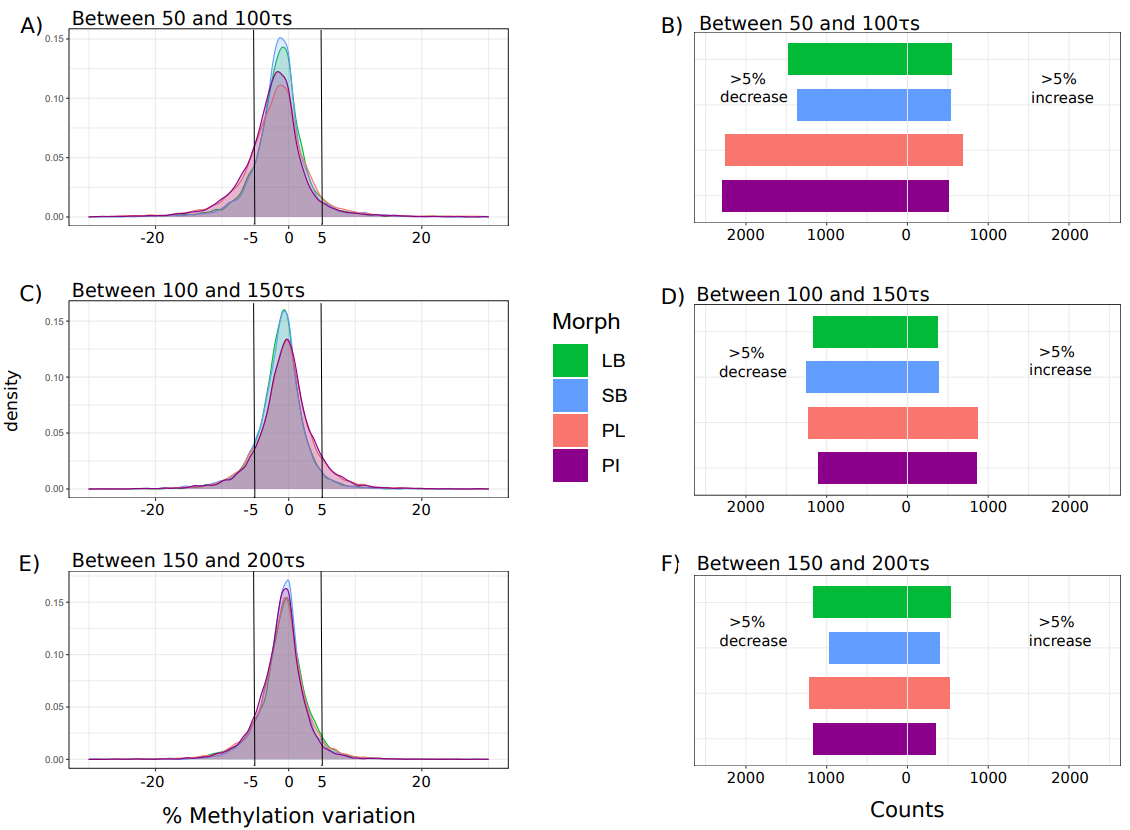
From the abstract.
- The data revealed strong differences between developmental timepoints and between morphs (mainly along the benthic – limnetic axis), both at single CpG sites and in 1000bp-regions. Genes located close to differentially methylated CpG sites were involved in nucleosome assembly, TGF-β regulation, and cell matrix adhesion.
The lab had several contributions to the biannual Biology in Iceland conference. These were, in no particular order.
Talks
Experimental tests of unicoloniality in Hypoponera species (Hymenoptera: Formicidae) living underground Reykjavík
Marco Mancini, Andreas Guðmundsson, Mariana Lucia Tamayo, James K. Wetterer, Arnar Pálsson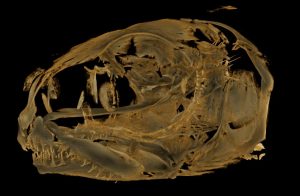
Diversity in the internal functional feeding elements of Arctic charr, Salvelinus alpinus, morphs in Lake Thingvallavatn, Iceland.
Guðbjörg Ósk Jónsdóttir, Finnur Ingimarsson, Sigurður Sveinn Snorrason, Sarah Elizabeth Steeleand Arnar Pálsson
Correspondence of morphological divergence across genotypes in response to diet follows evolutionary divergence of ecologically specialized morphs
Sarah E. Steele, Arnar Pálsson
DNA methylation patterns separate sympatric morphs of Arctic charr
Sébastien Matlosz, Benjamín Sigurgeirsson, Arnar Pálsson, Sigríður R. Franzdóttir, Zophonías O. Jónsson
New wine in old bottles: Geometric morphometric analysis revealed shape and allometric variation among sympatric Arctic charr morphs in Lake Thingvallavatn
Han Xiao, Arnar Pálsson, Sigurður S. Snorrason, Zophonías O. Jónsson
Transcriptional rewiring following compensatory selection of major mutations
Baldur Kristjánsson, Dagný Á. Rúnarsdóttir, Sudarshan Chari, Ian Dworkin, Arnar Pálsson
Dragging skeletons on wings: the effects of strong selection on transcriptional landscapes
Arnar Pálsson, Baldur Kristjánsson, Lea Jerman Plesec, Dagný Ásta Rúnarsdóttir
Posters
Food availability of juvenile Atlantic salmon (Salmo salar) in rivers of Northeast Iceland Sum Yi Lai, Jón S. Ólafsson, Arnar Pálsson, James Rosindell, Guðni Guðbergsson, Ingi Rúnar Jónsson, Hlynur Bárðarson
Population genetics of stream populations of Arctic charr in North Iceland Sabrina Carli , Sabrina Carli, Irem Dogruoglu, Han Xiao, Marcos Lagunas, Dagny Ásta Rúnarsdóttir, Stefán Óli Steingrímsson, Sarah E. Steele, Arnar Pálsson
A region of ATG7 evolved in vertebrates and might account for a new function Valgerður Jakobína Hjaltalín, Margrét Helga Ögmundsdóttir, Arnar Pálsson
We have started a collaboration with Benedikt Hallgrimsson and his colleagues at University of Calgary, Marta Vidal-Garcia and Avrille Aiello.
They are scanning one year old Arctic charr that Sarah Steele raised in her plasticity experiment. That study focused on comparing morphological differences and plastic responses between derived and ancestral populations of charr, to understand differences in growth, allometric changes in shape and inheritance of these traits.
The pilot project with the Hallgrimsson lab focuses on comparing three morphs, the anadromous charr from Fljota (putative ancestral morph) and two derived morphs from Lake Thingvallavatn, the Large Benthic and Planktivorous charr. They were all raised on the same diet, and are similar in size. First scans from Avrille and Marta, of an LB individual, are shown below.

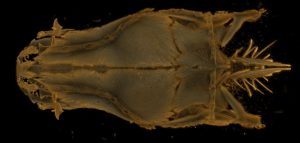
The top figure is lateral view (with an angle slightly from the front) and the lower figure is a view from the top of the head (first vertebrae can be seen on the right).
The fishes were about 1 year old when killed and frozen. Fixed in 10% NPF for 10 days, prior to CT scanning.
In this phase of the project we will scan 20 fishes per morph, and characterize the diversity in shape of the feeding related bones, snout area and the cranium.
And hopefully be able to scan the other treatment, wild fishes and progeny from crosses in the future if funding becomes available.
Several members of our lab and students we help supervise contributed to the Icelandic Ecology Conference in April 2021.
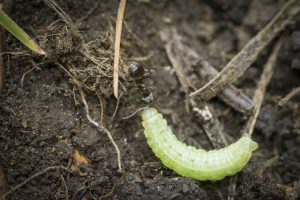
Lasius niger ant dragging a larvae. Picture taken by Marco Mancini.
Marco Mancini - Unveiling the myrmecofauna (Hymenoptera: Formicidae) of Iceland. A survey of invasive ant species diversity and distribution
Arnar Pálsson - Unleashing of cryptic genetic variation by environmental challenges and genetic assimilation studied at level of gene expression
Sarah Steele - Correspondence of morphological divergence across genotypes in response to diet follows evolutionary divergence of ecologically specialized morphs
Sebastien Matlosz - DNA methylation in Arctic charr: Epigenetics to explain resource polymorphism.
Link to abstract book.
"Most Icelanders probably think that there are no ants in Iceland, just as I did when I first arrived here, but our research has revealed five different species that have settled here. Four thrive in houses due to the heat and the humidity, but one species lives outside in gardens," says Marco Mancini, master student in biology at the University of Iceland and a member of the antsquad at the University's Institute of Biology. The squad maps the distribution of ants in Iceland, and examines whether there are giant ant colonies in the city's sewage system.
The project is called Ants in Iceland (Maurar á Íslandi) and is linked to Marco's master project. The project is conduced under the supervision of Arnar Pálsson, professor of bioinformatics and Mariana Lucia Tamayo, associate professor in Environment and Natural Resources. Andreas Guðmundsson, BS student in biology is also involved in the project.
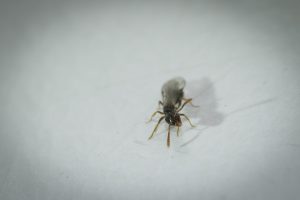
Ant queen.
The oceans are fundamental ecosystems on the planet and source the most important resources for Icelands economy. The University of Iceland (UI) and the Marine and Freshwater Research Institute (MFRI) collaborate to offer a multidisciplinary two-year Master of Science (MS) program on aquatic biology and fisheries, emphasizing freshwater and marine ecology and fisheries in sub-Arctic environments. The program will be instigated in 2020 as a specialization within MS in Biology.
Students can take projects at the Institute of Biology, the Marine and Freshwater Research Institute and also at other affiliated institutions and research centers. Students are admitted based on merit (see University of Iceland webpage) and will find a project and supervisor in the first year of study.

Picture of Atlantic cod (Gadus morhua) from the University of Iceland collections.
The Marine and Freshwater Research Institute has many research areas, including but exclusive to Fish tagging, Lumpfish research, Oceanography, Seabed mapping, Seal research and Whale Research.
The Institute of biology studies many aspects of marine and aquatic biology, spanning questions of ecology and evolution, to toxicology and behavioral biology.
See for instance a list of previous MS projects in the fields of marine-, aquatic- and fish biology.
Some examples of the research topics and potential supervisors are listed below.
- What is the population structure and diversity of fisheries stocks? Einar Arnason, Steve Campana, Gudrun Marteinsdottir, Snæbjörn Pálsson
- How do fishing stocks respond to fishing and climate change? Einar Arnason, Steve Campana, Gudrun Marteinsdottir
- How did freshwater amphipods survive million years under the glaciers? Snæbjörn Pálsson
- How do cod stocks evolve and change over the last century? Einar Arnason, Steve Campana
- Which genes and environments explain the diversity of Arctic charr? Sigurdur S. Snorrason, Arnar Pálsson, Zophonías O. Jónsson
- How related are different populations of Arctic charr and Brown trout in Iceland? Sigurdur S. Snorrason, Arnar Pálsson, Zophonías O. Jónsson
- What explains the diversity and distribution of whelk in subartic waters? Snæbjörn Pálsson, Zophonías O. Jónsson
Sorry, this entry is only available in Icelandic.





